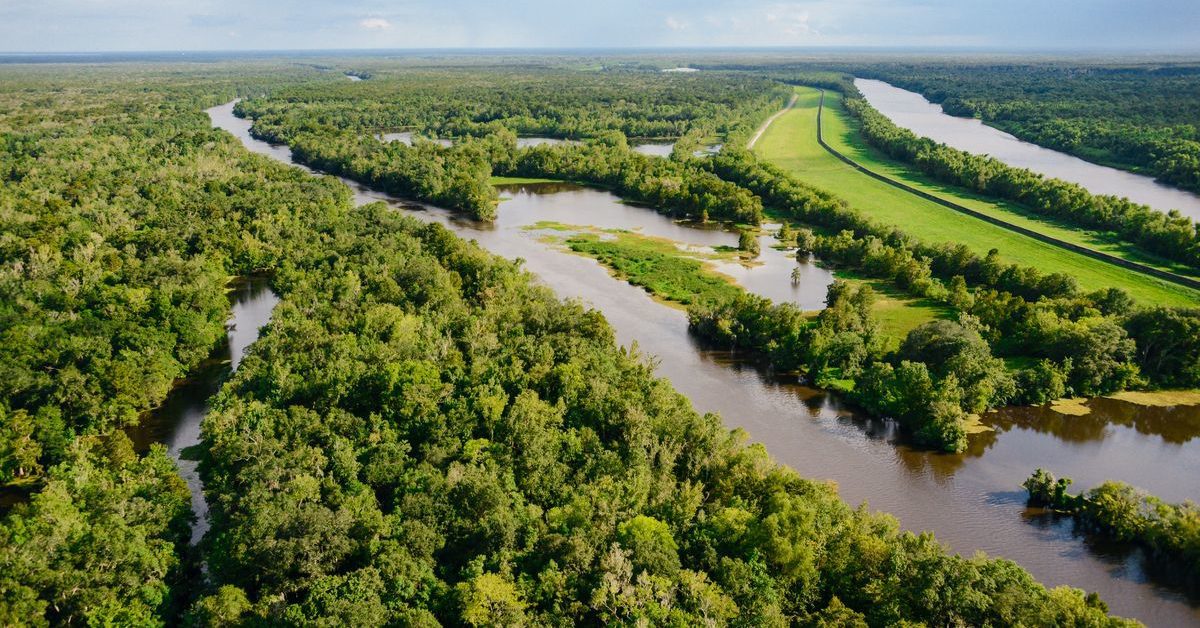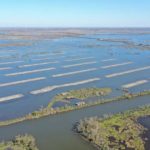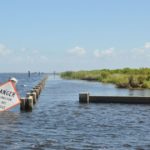Wetlands are a critical feature of a healthy landscape. They provide a habitat for many species of wildlife and vegetation. Wetlands also protect against flooding, erosion, and water pollution.
If you plan to develop an area that contains wetlands, you will need to understand your role in protecting these functions via wetland mitigation. In this article, you will learn when wetlands need to be mitigated, how mitigation is performed, and why it is so important.
When Should Wetlands Be Mitigated?
Wetlands must be mitigated anytime they are converted to another land type. Wetland mitigation involves replacing the lost functions of destroyed wetlands elsewhere. Wetlands are commonly converted to other land types for agricultural or development purposes, and have historically been destroyed at alarming rates. Federal and state regulations allow for the conversion of wetlands to other land uses only when avoiding harmful impact is unavoidable.
Conversion of land comes in many forms. The National Resources Conservation Service of the United States Department of Agriculture details specific actions that require wetland mitigation. These actions include:
- Filling
- Draining
- Land Leveling
- Clearing woody vegetation involving stump removal
- Diverting runoff water
These are common activities that impact wetlands, but any action that alters wetland area, function, or value requires mitigation. Mitigation should take place either before or during conversion.
In some cases, mitigation can be completed after conversion as part of a Good Faith Agreement. In these instances, mitigation should be completed within 12 months of wetland conversion.
Conversion for Agricultural Use
To slow the loss of wetlands in the United States, the USDA implemented strict guidelines in the Swampland Provision of the 1985 Farm Bill.
According to the Swampland Provision, anytime wetlands are converted for agricultural purposes the owner loses all USDA program benefits unless mitigation is performed to replace the losses. Farmland is also subject to Section 404 of the Clean Water Act.
Conversion for Development Purposes
Wetlands that are converted for development are also required to be mitigated. Per Section 404 of the Clean Water Act, developers must try to avoid harming any wetland areas, but if it is deemed unavoidable, a permit must be issued by the United States Army Corps of Engineers before wetlands can be converted.
In cases where permits are issued, it is required that all lost functions from wetlands alteration be replicated elsewhere.
What Must Be Done to Mitigate Wetlands?
Wetland mitigation refers to the process of replacing the functions, area, value, and public benefits of any destroyed wetlands. When destruction is unavoidable, the functions are replicated in another area.
In this sense, the wetlands are “moved” rather than destroyed. There are four main types of wetlands mitigation: preservation, restoration, enhancement, and creation.
The preferred method of mitigation for each situation depends on many factors. Each method will work best in certain areas and to restore certain functions. The cost of mitigation will also vary greatly depending on the method that is used. Speaking to an environmental consultant can help you determine which type of mitigation is the best choice for your specific project.
Preservation
Preservation of wetlands attempts to protect areas such as swamps, bogs, and other wetlands as well as the upland buffers that protect them from natural damage. Preservation may involve physical protection, although it is often accomplished through legal means.
This may be done through the transference of land ownership or placing the land under a conservation easement. The goal is to keep the wetland and its upland buffer in their natural state for the foreseeable future.
Restoration
Wetlands restoration reestablishes or rehabilitates the natural and historic functions of a specific wetland. Reestablishment refers to rebuilding former wetlands. Rehabilitation repairs damaged wetland functions. Rehabilitation of degraded wetlands could be as simple as replanting native flora. Other examples of restoration are the extraction of ditches and drains in the wetland area.
Restoration should focus on three key elements. It should preserve and protect aquatic resources. It should restore ecological integrity by reestablishing the structure, composition, and natural processes of the physical environment and of the native flora and fauna. Finally, it should restore the natural structure and function of the wetland.
Enhancement
Enhancement is another form of wetland mitigation. It involves modifying the structure of an aquatic resource to increase its functionality through biological, chemical, or physical means.
Examples of enhancement include modifying the proportion of open water and the elevation of the site. Common enhancement goals are water quality improvement, flood water retention, and habitat improvement for native wildlife.
Creation of Constructed Wetlands
Constructed wetlands attempt to replicate the natural functions of wetlands. They are man-made bodies of water constructed in areas that were never home to wetlands in the past.
Because wetlands creation involves building wetlands completely from scratch, this method is generally the most complex and expensive mitigation method. Proper site selection is also crucial.
Each constructed wetland is built according to the wetland function it is replicating. Common purposes for creating new wetlands are to capture stormwater and prevent flooding, treat wastewater, and create habitats for native wildlife. Replication of each function requires unique materials and engineering specifications.
Why Should I Mitigate Wetlands?
Legal Requirements
There are two main reasons to mitigate wetlands. Firstly, it is a legal requirement in most cases. According to the EPA, wetlands can be only destroyed if those losses are compensated for through preservation, restoration, enhancement, or creation of other wetlands that result in no net loss of total wetland area and function.
Permits for development or land conversion will not be issued without plans for proper mitigation of damaged wetlands. Planning for wetland mitigation must be approved by the National Resource Conservation Service and permits are issued by the U.S. Army Corps of Engineers. Mitigation is regulated by both federal and state laws.
Failure to comply with the latest wetland mitigation regulations can result in serious legal penalties.
Agricultural Considerations
Farmers who do not comply with wetland mitigation regulations will lose all funding from the USDA, per the Swampland Provision. If you intend to convert wetlands on your property for agricultural purposes, you must adhere to strict mitigation regulations per the Clean Water Act in order to protect your federal farm program benefits.
In order to comply with USDA mitigation requirements, you will need to create a mitigation plan, which should be done with the assistance of an experienced and qualified consulting company.
Ecosystem Benefits
According to the EPA, over half of the wetlands in the lower 48 states of the United States have been already been lost to draining and conversion. While the rate of loss has slowed in more recent decades, over 62,000 acres of wetlands in the U.S. were destroyed between 2004 and 2009 alone.
The loss of wetlands affects everyone. The functions of wetlands are unique and varied and their loss is simply devastating to both the natural environment and developed areas.
Among other functions, wetlands protect from storms, flooding, and erosion, and they provide habitat to birds and other wildlife, many of which are endangered. They naturally purify polluted waters and contribute to a robust economy.
Protection Against Storms, Flooding, and Erosion
Wetlands have the incredible ability to store huge amounts of water and slowly discharge the excess into nearby waterways. This ability makes them invaluable in protection against flooding.
When wetlands are destroyed, excess water from heavy rains and storms has nowhere to go and causes flooding conditions that destroy property and agricultural land, and threaten human life.
Storms and flooding cause erosion along coastlands that threatens waterfront homes and property as well as agricultural land. The roots of wetland plants help to bind the soil so that it is not washed away. The plants also act as a physical barrier against high waves and fast-moving flood waters.
Wetlands also provide protection against storm surges. In recent years, storms have caused devastating damage in many parts of the world. With increasingly extreme weather events,
Bird and Wildlife Habitats
Birds, marine species, and other wildlife depend on wetlands for their survival. Many threatened and endangered species call wetlands home, or spend part of their lifecycle there.
The destruction of wetlands has resulted in decreased populations of many different species. Ecosystems rely on biodiversity to remain resilient and the loss of wetlands threatens the resiliency of our natural environment.
Even the extinction of one or two species can have devastating consequences, as each species has a vital role within the ecosystem. The extinction of one species affects other species up and down the food chain.
This can lead to further extinctions, or overpopulation of other wildlife, which may result in increased disease, property damage, food insecurity, and economic catastrophe.
Water Purification
Wetlands improve water quality through a number of natural processes. Up to 90 percent of sediments that pass through a wetland may be removed from the run-off water. This occurs because runoff slows as it passes through the wetland and the roots of the many plants are able to trap the sediments.
Nutrient removal is another important process that improves water quality. Fertilizers and sewage systems contain high concentrations of nitrogen and phosphorus. When high levels of these nutrients enter bodies of water they cause algae blooms which may result in the death of wildlife and vegetation. Wetland vegetation is able to take these nutrients out of runoff water, and recycle them back into the wetland soil.
Some toxic chemicals present in runoff water are able to be detoxified by wetlands or converted into less harmful chemicals. This improves the quality of the water, making it safer for aquatic plants and animals, wildlife that drinks the water, and even humans if it is used as drinking water.
Economic Benefits
Healthy ecosystems contribute to a healthy economy. Wetlands are home to many species of fish that are sold commercially, as well as countless fisheries. Many states rely on seafood sales as a significant part of their economy. The recreational fishing and hunting that occur in wetlands also provide a significant boost to the local economies.
Wetlands also provide many natural functions, such as water treatment, which would cost huge sums of money to perform otherwise.
Another consideration is the cost of damage that is caused by storms and flooding when degraded wetlands no longer provide protection against them. This takes a huge toll on both public and private property, costing billions of dollars a year in the United States alone
Final Thoughts
Wetland mitigation is crucial to protect the ecosystem. It is also a non-negotiable requirement if your land use is going to result in the conversion of wetland areas. We hope that this article has given you a good idea of how wetlands are mitigated, as well as some of the main reasons why wetland mitigation is necessary.





